Imagine you're piloting a sailboat, and the wind suddenly picks up, propelling you forward with force.
Just as adjusting the sails is crucial for harnessing the wind's power efficiently, mastering the Relative Strength Index (RSI) in momentum trading can help navigate market fluctuations effectively.
By understanding the top 10 tips for utilizing RSI, you can fine-tune your trading strategies and steer towards profitable outcomes.
RSI Basics for Momentum Trading
In momentum trading, understanding the basics of the Relative Strength Index (RSI) is crucial for making informed decisions based on market conditions. RSI, a momentum oscillator developed by J. Welles Wilder Jr., ranges from 0 to 100, with 50 indicating neutrality. This indicator helps traders assess the strength and speed of price movements, essential for momentum trading analysis.
When RSI values fall below 30, it suggests an oversold market condition, potentially indicating a buying opportunity. Conversely, RSI values above 70 signal an overbought market condition, which could imply a selling opportunity. By monitoring RSI levels, traders can gauge the momentum in the market and make strategic decisions to capitalize on price movements effectively.
Understanding RSI Signals
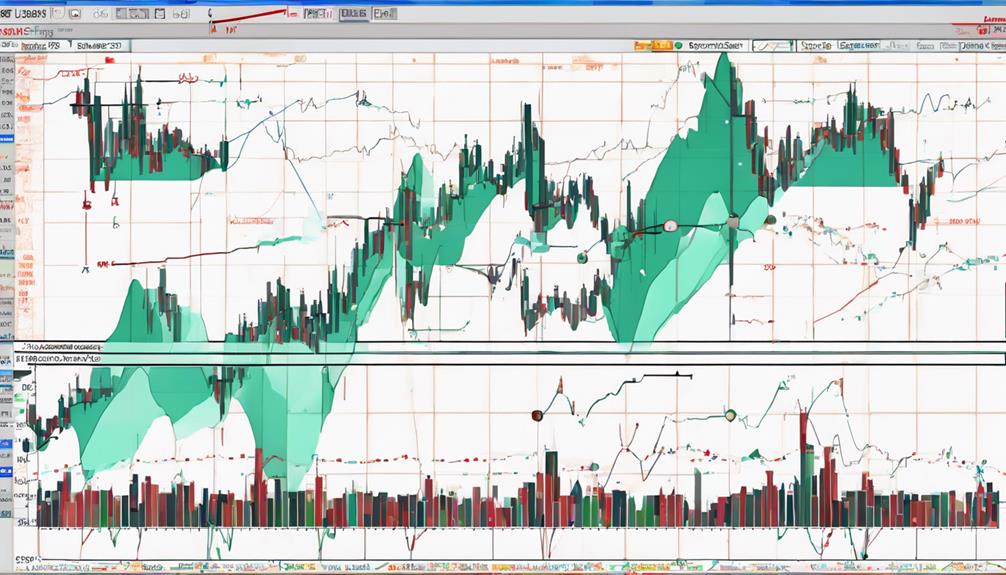
Pivoting from the foundational knowledge of RSI basics, delving into the specifics of understanding RSI signals is essential for effectively navigating momentum trading strategies.
When using the RSI indicator to improve your trading strategy, it's crucial to identify overbought and oversold conditions in the market. Additionally, understanding that RSI values above 50 suggest that average gains are surpassing average losses can help you make more informed decisions.
Moreover, utilizing RSI to confirm buy or sell signals in momentum trading strategies can enhance the effectiveness of your trading rules. By incorporating these insights into your technical analysis, you can better interpret market dynamics and optimize your momentum trading approach.
Setting Optimal RSI Parameters
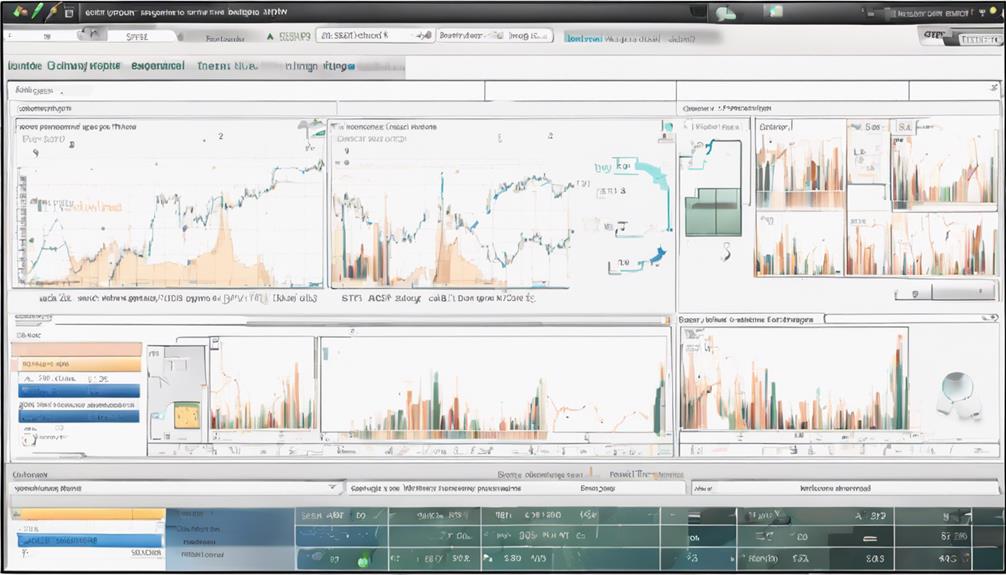
When selecting RSI parameters, consider the default period of 14 as a starting point for momentum trading. Fine-tuning these settings to match specific time frames and market conditions can enhance the indicator's effectiveness in generating trading signals.
Adjusting RSI levels, such as setting them at 80 and 20 during volatile periods, can aid in identifying extreme market conditions more accurately.
RSI Parameter Selection
Fine-tuning the RSI parameters is essential for optimizing its effectiveness in momentum trading, allowing for increased responsiveness to market dynamics. When selecting RSI parameters, consider the following:
- Standard Periods: Optimal RSI parameter settings often use a period of 14 for standard analysis.
- Intraday Trading: Traders may benefit from shorter RSI periods, like 9, for intraday trading strategies to capture shorter-term price movements.
- Customizable Levels: Utilizing customizable RSI levels such as 80/20 can be advantageous during high volatility periods, offering insights into overbought and oversold conditions.
Fine-Tuning RSI Settings
To optimize your momentum trading strategy effectively, consider adjusting the RSI parameters to better suit your trading style and current market conditions. Traders can fine-tune RSI settings by adjusting the period length to find optimal settings. Commonly used defaults include a period of 14, but testing different periods can help identify the most effective one.
Setting RSI levels at 80 and 20 during high volatility periods can assist in filtering out false signals. Additionally, traders can customize their RSI style by adjusting line color and weight for better visualization. By actively adjusting and fine-tuning RSI settings to match market conditions and personal preferences, traders can enhance the effectiveness of their momentum trading strategy.
Identifying Momentum Trends With RSI
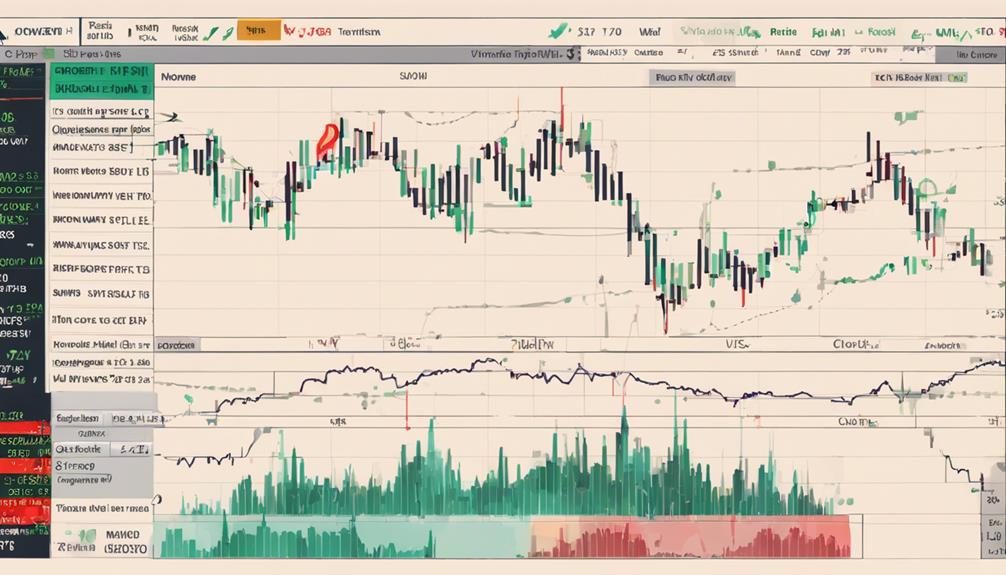
When looking at RSI to identify momentum trends, focus on the values above 50 indicating uptrends with stronger gains than losses.
RSI values typically oscillating between 40-80 during uptrends suggest sustained momentum.
RSI Trend Identification
In momentum trading, identifying trends with RSI involves analyzing the Relative Strength Index to gauge the speed and direction of price movements.
Key Points for RSI Trend Identification:
- RSI values above 50 indicate an uptrend, while values below 50 suggest a downtrend, aiding in identifying consistent trends.
- RSI helps traders pinpoint overbought and oversold conditions, guiding effective decision-making in momentum trading strategies.
- Specific RSI ranges, such as 40-80 for uptrends and 20-60 for downtrends, serve as signals for spotting potential profitable opportunities based on price movements.
RSI Momentum Signals
Analyzing RSI momentum signals in momentum trading provides valuable insights into identifying and capitalizing on trends effectively.
When the Relative Strength Index (RSI) surpasses 50, it signifies that the average gain is exceeding the average loss, indicating an uptrend. RSI typically fluctuates between 40-80 in uptrends and 20-60 in downtrends, aiding in trend identification.
During normal pullbacks, RSI finding support in the 40-50 range emphasizes its role as a momentum indicator. Utilized for momentum analysis, RSI focuses on trend strength and direction, rather than mean reversion.
Using RSI for Entry Points
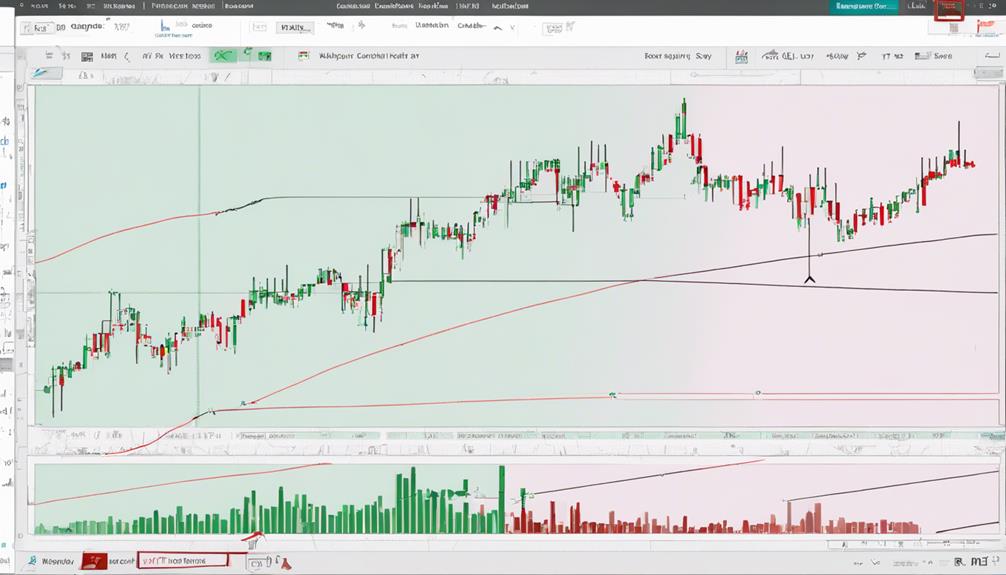
Utilizing Relative Strength Index (RSI) effectively can enhance your precision in identifying optimal entry points for momentum trading strategies. When using RSI for entry points, consider the following:
- Oversold Conditions: RSI below 30 often indicates oversold conditions, signaling potential entry points.
- Long Positions: Look for RSI to cross above 30 as a signal to enter long positions, indicating a potential uptrend.
- Short Entry Opportunity: Crossing 70 from above might suggest a short entry opportunity, signaling a potential downtrend.
Managing Risk With RSI

To effectively manage risk in momentum trading using RSI, consider implementing strategic stop-loss orders based on identified overbought and oversold conditions. Utilizing RSI to confirm trade signals and adjusting position sizing strategies can help control risk exposure.
Setting stop-loss orders aligned with RSI levels aids in limiting losses during volatile market conditions. Confirming signals with RSI enhances entry and exit accuracy, reducing the risk of false signals.
Incorporating trailing stops and other risk management tools can further improve overall risk management in momentum trading. By combining RSI with proper risk management techniques, traders can navigate market fluctuations more effectively and protect their capital in various trading scenarios.
Avoiding False Signals in RSI
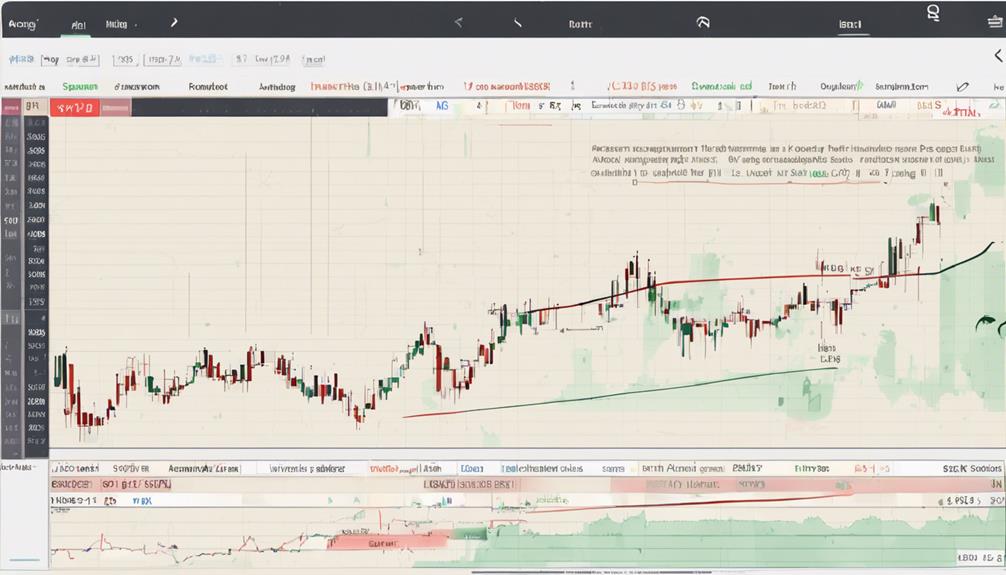
When navigating the realm of RSI in momentum trading, honing in on signal filtering techniques and employing confirmation strategies can be pivotal.
By understanding how market noise and short-term fluctuations can trigger false signals, you can enhance the precision of your trading decisions.
Integrating complementary technical indicators can serve as a robust defense mechanism against false alarms, ultimately safeguarding your portfolio from potential losses.
Signal Filtering Techniques
Filtering techniques play a crucial role in momentum trading by mitigating the impact of false signals that often manifest during choppy or ranging market conditions. To avoid unreliable RSI signals, it's essential to confirm them with other technical indicators for signal validation.
Here are three key techniques to filter out false alarms and enhance the accuracy of RSI signals:
- Utilize Volume Analysis: Incorporate volume analysis alongside RSI to filter out noise and strengthen the reliability of trading signals.
- Avoid Sole Reliance on RSI: Don't trade solely based on RSI signals; consider using other indicators to reduce the likelihood of false signals.
- Cross-Verification: Cross-verify RSI signals with multiple indicators to increase the confidence in the trading decision-making process.
Confirmation Strategies
Incorporating additional indicators to validate RSI signals is essential in confirming trading decisions and avoiding false signals. The moving average is commonly used in RSI trading strategies to filter out noise and confirm trends. By analyzing the relationship between RSI and moving averages, traders can better understand the momentum and potential reversals.
Volume analysis is another critical confirmation strategy that can be used alongside RSI. Monitoring volume changes in conjunction with RSI signals can provide insights into the strength of a price move. Additionally, oscillators like MACD can complement RSI signals by confirming buy or sell opportunities.
Divergence between RSI and price action is also an effective indicator used to enhance the reliability of trading signals. By implementing these confirmation strategies, traders can improve the accuracy of their RSI-based trading decisions.
Combining RSI With Other Indicators
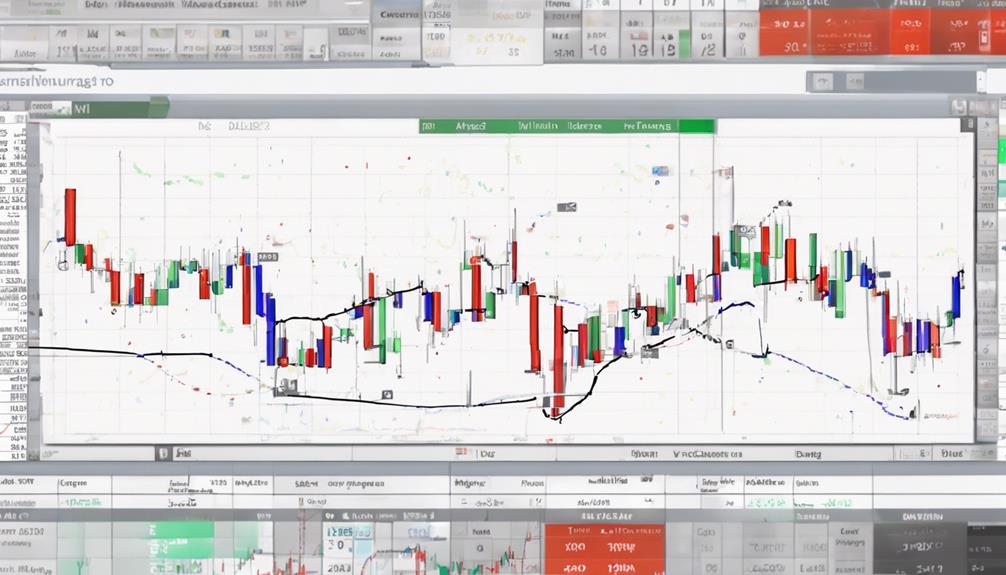
Combining RSI with various indicators can significantly enhance the effectiveness of your momentum trading strategy.
When integrating RSI with moving averages, you can obtain confirmation signals for trade entries.
Additionally, combining RSI with volume indicators can improve the accuracy of buy and sell signals.
Moreover, utilizing RSI in conjunction with trend lines can assist in identifying potential trend reversals more effectively.
By incorporating RSI with price action analysis, you can refine the timing of entry and exit points in your trades.
Furthermore, integrating RSI alongside other oscillators such as MACD can provide a more comprehensive view of market conditions, aiding in better decision-making processes.
Monitoring RSI Divergence
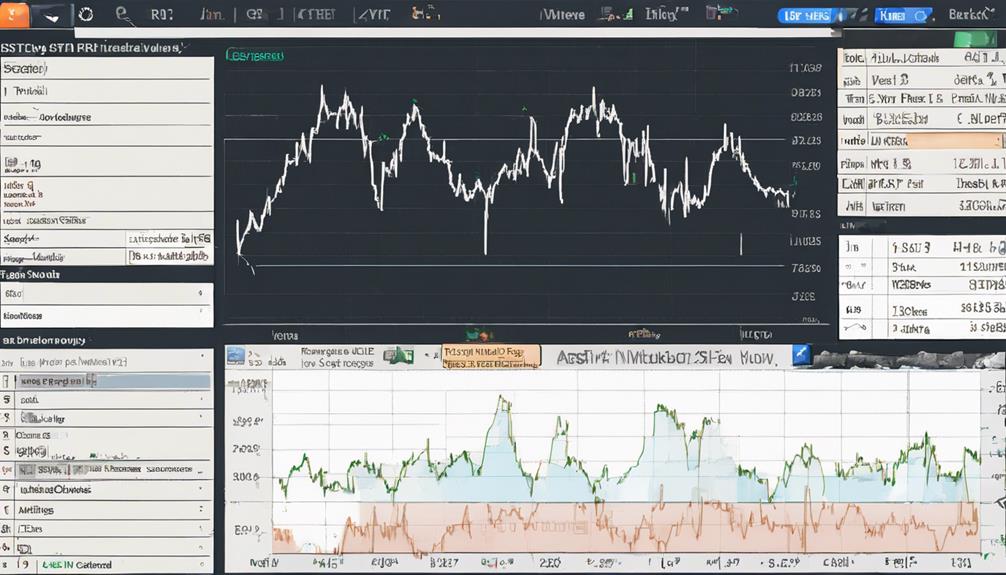
To effectively anticipate potential trend reversals in momentum trading, closely monitoring RSI divergence is crucial. RSI divergence occurs when price and RSI move in opposite directions, signaling a potential trend reversal.
Bullish divergence, where price makes lower lows while RSI makes higher lows, suggests a possible uptrend. On the other hand, bearish divergence, characterized by price making higher highs as RSI forms lower highs, indicates a potential downtrend.
How Does RSI in Forex Trading Compare to RSI in Momentum Trading?
When comparing RSI in forex trading to RSI in momentum trading, it’s important to consider their applications within the context of the top forex trading strategies. While both rely on the RSI indicator, forex trading typically uses it to identify overbought or oversold conditions, while momentum trading focuses on trend strength and potential reversals.
Fine-Tuning Your RSI Strategy
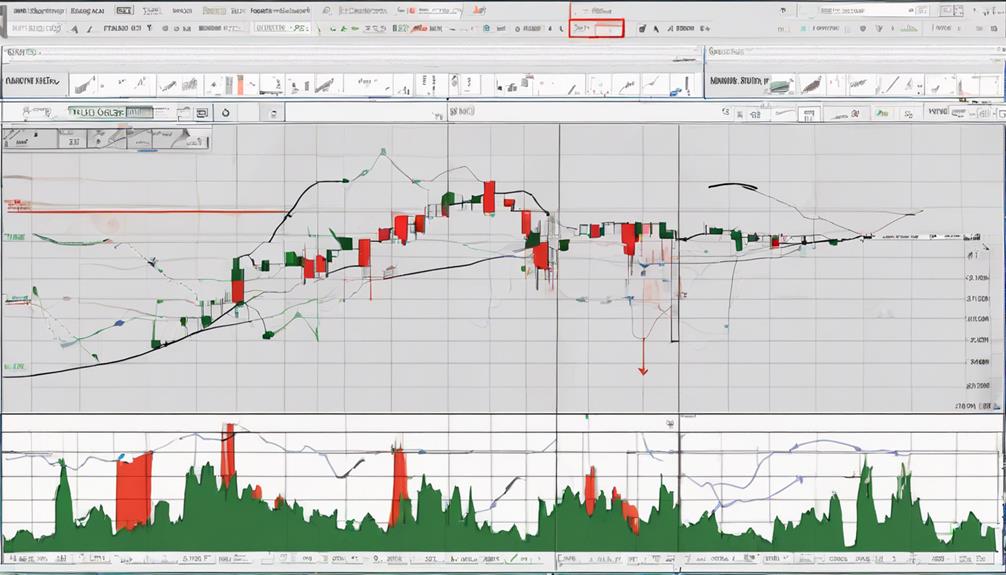
Consider adjusting the RSI period settings to optimize your momentum trading analysis.
- Experiment with Different RSI Settings:
- Utilize a standard RSI setting of 14 for general momentum trading.
- Try shorter RSI periods like 9 for more rapid analysis in intraday trading strategies.
- Fine-Tune RSI Thresholds:
- Define overbought conditions above 80 and oversold conditions below 20 for better decision-making.
- Implement RSI Trendlines:
- Utilize RSI trendline methods to identify precise entry and exit points in trades.
Frequently Asked Questions
How Do You Use RSI for Momentum Trading?
To use RSI for momentum trading, you identify trends and market conditions. Look for RSI above 50 in uptrends and use the 40-50 range for pullbacks. Remember, RSI between 40-80 in uptrends and 20-60 in downtrends.
What Is a Powerful Strategy for Rsi?
Boost your trading with the RSI Range-Momentum Strategy. Utilize a 100-day lookback and 14-day RSI for precise buy and sell signals. Backtested since 1993 on the S&P 500, it boasts a 5.93% CAGR and 83% win ratio.
What Is the Best Combination of Rsi?
For the best combination with RSI, consider pairing it with a longer-term moving average like the 200-day MA. This can offer a balanced view of momentum and trend strength, aiding in making informed trading decisions.
What Is the 5 Star RSI Strategy?
Want to master the 5 Star RSI Strategy? It's a game-changer for momentum traders. Utilize RSI levels, trend analysis, and price action to ride the waves of momentum trends. Enhance your trades with this powerful strategy.
Conclusion
You have learned the top 10 tips for using RSI in momentum trading to enhance your trading strategy.
Did you know that on average, stocks tend to be overbought when their RSI reaches above 70 and oversold when it falls below 30?
By monitoring RSI levels and implementing these tips, you can make more informed trading decisions and increase your chances of success in the market.
Keep refining your strategies and stay vigilant for profitable opportunities.
